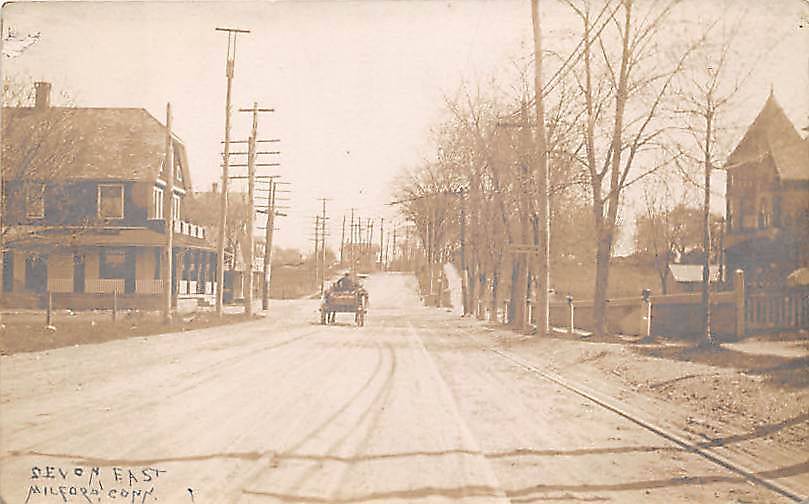Milford, CT c.1915 Utility Poles with Interesting Poletop Extensions
By Joe Maurath, Jr.; posted July 8, 2015
View Original: Click to zoom, then click to magnify (809 x 504) 54KB

|
The latter were either for fire alarm circuits or (less likely) electric lighting customers; mounted higher above the four-crossarm telephone lead that was strung beneath. It was common practice before the teens to mount fire alarm circuits above all other utility wires. Otherwise when strung beneath, fallen electric lighting and/or comms wires sometimes interfered with vital fire alarm telegraph operation; once considered a highly valuble community means of fire-reporting communication before the widespread popularity of the telephone. Typically electric service wires were strung upon separate poles. Commencing in the teens standardization of pole line construction among overhead utilities provided some added safety along with covered paired telephone cables along pole routes. Heavy duty direct current lines for trolley service are seen on the right. |